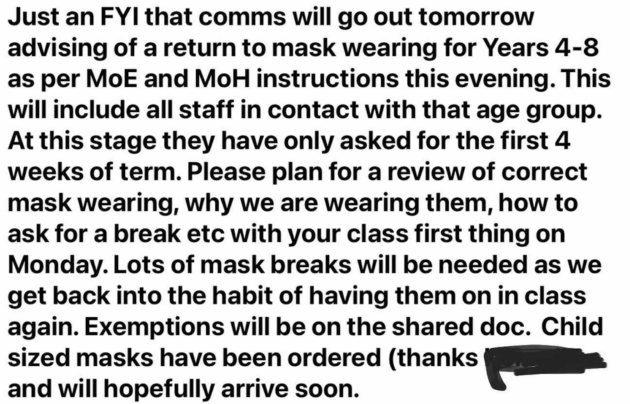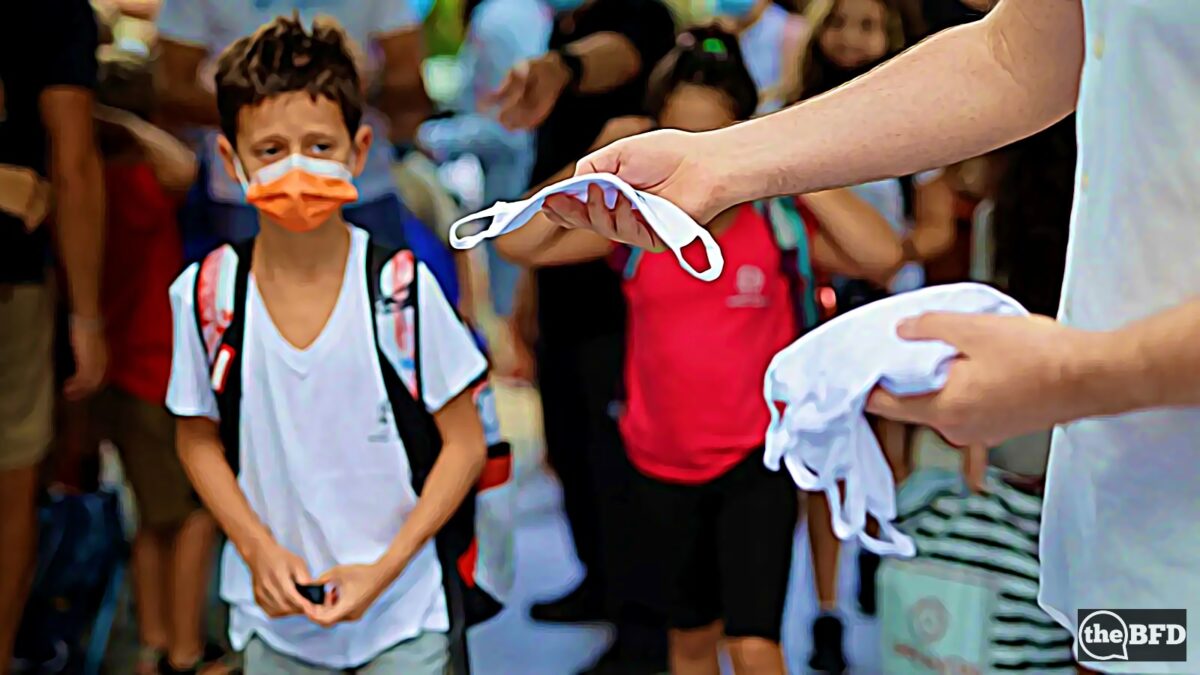Colin Parkinson

The government has required students from year four upwards to wear masks in the classroom, but in order for masks to be of any practical benefit, they must be the proper type and properly fitted.
The “medical grade” masks recommended are not as effective as N95 or similar masks, but are they effective enough? I seriously doubt it. In fact, N95 would be a bare minimum and that should only be for very short-term (maximum 15 minutes) exposure risks.
In order for an N95 mask to operate correctly, it requires an air-tight seal round all edges, otherwise it is not really filtering anything at all and is little more than an expensive ‘gimmick’. Unfortunately, like most of the “health response measures”, mandating the use of masks seems to be more political than health based.
To form an airtight seal, the face must be clean shaven and it is recommended to use Vaseline or similar to help seal the edges of the mask. The mask itself should have a rubber/silicone seal which is usually not found in cheaper, disposable “N95” masks.
If the mask is not properly sealed, then air can enter in through the sides of the mask bypassing the filter and rendering the whole mask effectively useless in filtering virus particles. This would then offer no real advantage over a scarf or T-shirt pulled up over the nose and mouth.
The problem with a properly fitted N95 mask is that it makes breathing quite difficult, raises CO2 levels and also increases the risk of heat exhaustion.
A powered respirator like the one in the below link would be the minimum PPE necessary to be of any benefit in reducing chances of infection while maintaining relatively ‘safe’ levels of CO2 concentrations. One look at the picture should indicate why this is unlikely to be implemented in a classroom environment. pubmed.ncbi.nlm.nih.gov/33858372/fig-1
There are reasons that you see pictures of scientists working in labs wearing inflatable suits.
Basically, the only real way to ‘eliminate’ the risk of passing on a virus is to implement the same protections found in a P4 lab – and even then there can be failures, especially when children are involved.
Questions to consider when evaluating the reduction of risk due to spreading of a virus:
- What is the exact level of reduction expected in a classroom environment?
- How often are masks/filters being changed and who monitors this?
- What measures have been taken to ensure that masks are not contaminated (virus free) before use?
- Who is responsible for this? When properly fitted an N95 mask should filter 95 per cent of material 0.3 microns or larger. Virus particles are actually smaller than this at around 0.1 microns so I would expect the true efficiency to be much lower, even when properly fitted. As the masks are not 100 per cent efficient it can be expected that after more than about half an hour spent in a room together, children still pose a reasonably high risk of spreading infection even with a properly fitted mask.
In practice, ‘N95’ masks are unlikely to be properly fitted by students, so they will offer very little benefit in reducing the chances of spreading a virus in a classroom environment. The small benefits gained should be weighed against any risk to health.
One of the main health risks to consider is the increased CO2 concentrations while breathing through a mask.
A few health and safety questions to consider:
- Will carbon dioxide levels of students wearing masks be monitored?
- How is this done?
- Who is responsible and what training have they had?
Infomation on toxic levels of CO2 concentrations can be found here: cdc.gov/124389
The following study shows the increased level of CO2 concentrations from wearing a mask reach the 15-minute safety limit and are significantly higher than the eight-hour limit. pubmed.ncbi.nlm.nih.gov/33858372/
I do not recommend continuous use of masks for more than 15 minutes at a time and definitely not on a daily basis. See diagrams here for clarity: pubmed.ncbi.nlm.nih.gov/33858372/fig-4; pubmed.ncbi.nlm.nih.gov/33858372/fig-5.
The following study on carbon dioxide levels raises many other areas of concern to consider: ncbi.nlm.nih.gov/PMC8072811
See the issues raised in section 3 (points 3.1 – 3.14). I would recommend going through each point carefully to identify each risk and ways to eliminate or at least minimise these risks.
Who will be held responsible for any harm caused to children due to long-term exposure to elevated carbon dioxide levels? The “medical grade” masks are mostly for show, and it seems that the government is aware of this, as every time there is a positive case identified in a class group the whole class is required to isolate. If the masks worked, there would be no need to isolate. There may be some minor benefit in some situations, but I sincerely doubt that there is any benefit at all for those spending an entire day in the same room. The only thing the children would be protected from is likely just much-needed oxygen. This is just giving a false sense of security and push fear onto children and their families.

